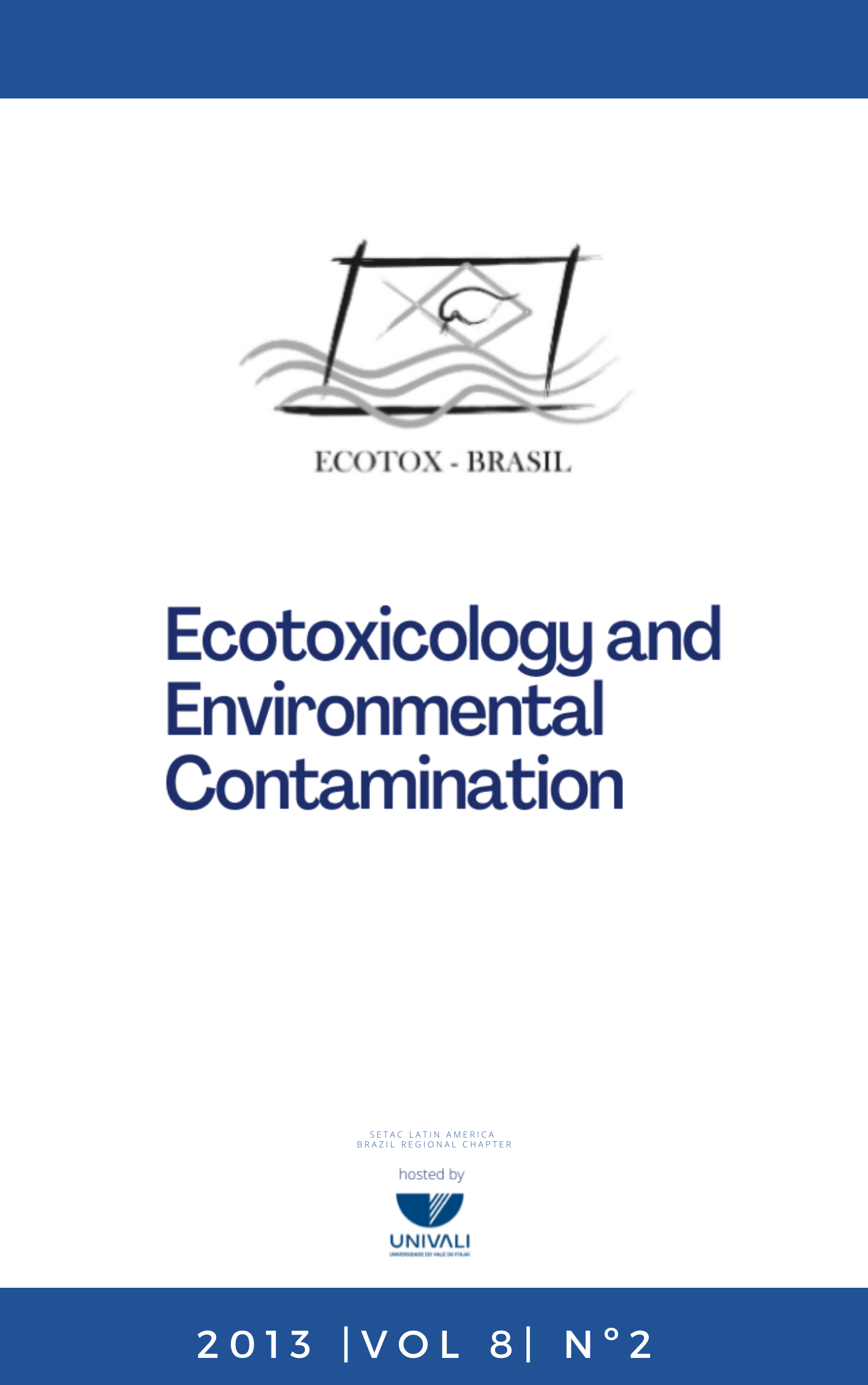The determination of chronic toxicity based only in fish survival is enough?
DOI:
https://doi.org/10.5132/eec.2013.02.010Abstract
In Brazil, the evaluation of short-term chronic effects on fish follows ABNT NBR 15499/2007. It can be conducted with two species: Danio rerio or Pimephales promelas. In the analysis with P. promelas, results are obtained by evaluating survival and growth of the organisms. However, when D. rerio is used, only the survival is evaluated. The objective of this paper is to assess whether the observed chronic toxicity on growth can always be extrapolated from the survival data, as suggested by ABNT NBR 15499/2007. 687 chronic tests with P. promelas were conducted. Three groups of results were observed: samples with toxicity effect only on growth, samples with toxicity effect only on survival and samples that showed toxicity effect on the survival and growth, simultaneously. The toxicity solely on the survival of organisms was observed in 56% and 31% of the tests for environmental samples and effluents, respectively. Analyzing the effluent tests where toxicity was detected on the survival, 32% also showed toxicity on growth. The toxic effect on the growth represented merely 44% of the environmental samples and 37% of the effluent samples. Therefore, chronic toxicity evaluations based exclusively on the survival of organisms may produce false negative results, especially when mortality is not detected at all.
Downloads
Published
How to Cite
Issue
Section
License
Copyright © 2006 ECOTOX-Brasil
Copyright notice: It is a condition for publication that manuscripts submitted to this journal have not yet been published and will not be simultaneously submitted or published elsewhere. By submitting a manuscript, the authors agree that copyright for their article is transferred to the Sociedade Brasileira de Ecotoxicologia (ECOTOX-Brasil) if and when the article is accepted for publication. The copyright covers the exclusive rights to reproduce and distribute articles, including reprints, photographic reproductions or any other reproduction of a similar nature, including translations. No part of this publication may be reproduced, stored in a retrieval system or transmitted in any form or by any means, electronic, mechanical, photocopying, recording or otherwise, without permission of the publisher.
Notice: While every effort is made by the EEC, editors and editorial board to see that no inaccurate or misleading data, opinions or statements appear in this journal, they wish to make it clear that the contents of the articles and advertisements published herein are the sole responsibility of the contributors or advertisers concerned. Accordingly, the EEC, the editorial board and editors and their respective employees, officers and agents accept no responsibility or liability whatsoever for the consequences of any inaccurate or misleading data, opinion or statement.




